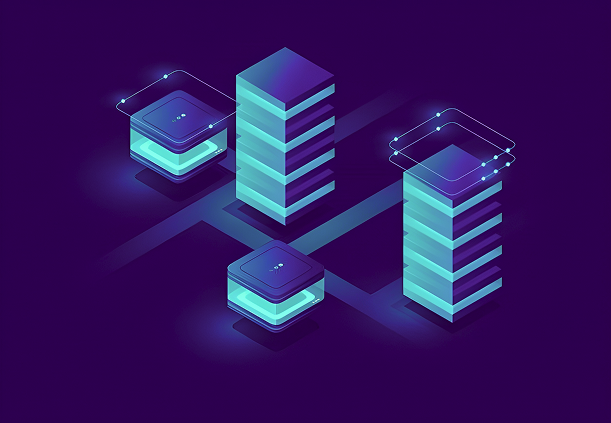Building Your AI Stack: Data Sovereignty as Your Foundation Layer

In the race to deploy AI at enterprise scale, many organisations are building their AI stacks upside down. They start with the shiny models, the compelling use cases, and the impressive demos—only to discover later that their foundation is built on sand. The most successful AI implementations start with data sovereignty as their bedrock.
At Katonic AI, we've learned from deployments across nations and enterprises that data sovereignty isn't an afterthought—it's the foundation that determines whether your AI stack will scale sustainably or collapse under regulatory and security pressures.
The Hidden Architecture of AI Success
Every AI system, from simple chatbots to complex autonomous agents, depends on a critical hierarchy. Think of it as a technology stack where each layer must be solid before the next can perform reliably:
Layer 4: AI Applications & Models
The visible layer—chatbots, predictive analytics, decision support systems
Layer 3: AI Infrastructure & Compute
GPU clusters, inference engines, model serving platforms
Layer 2: Data Engineering & MLOps
Pipelines, feature stores, model lifecycle management
Layer 1: Data Sovereignty (Foundation)
Data residence, governance, compliance, and control frameworks
Most organizations focus heavily on Layers 2-4 while treating Layer 1 as a compliance afterthought. This approach creates technical debt that compounds exponentially as AI systems scale.
The Data Sovereignty Foundation: Four Critical Pillars
Pillar 1: Data Inventory and Classification
Before you can protect data, you must understand what you have. This goes far beyond simple data catalogs—it requires continuous, automated discovery and classification that can keep pace with your AI ambitions.
The Classification Framework:
- Sovereign-Critical: Data that must never leave your controlled environment
- Regulated: Data subject to specific compliance requirements (GDPR, HIPAA, PDPL)
- Business-Sensitive: Proprietary information that provides competitive advantage
- Public-Safe: Data that can be processed in shared environments
Real-World Impact: A major financial institution discovered that 40% of their "public-safe" data actually contained regulatory identifiers that required sovereign treatment. This revelation prevented a compliance disaster that could have cost millions in fines.
Pillar 2: Data Localization and Residency Controls
Data sovereignty means your data stays where you decide it stays—not where your cloud provider finds it convenient to store it. With regulations spanning from China's Cybersecurity Law requiring domestic data storage to GDPR's transfer restrictions, localization isn't optional.
The Localization Strategy:
- Physical Boundaries: Ensuring data never crosses jurisdictional borders
- Logical Boundaries: Implementing software controls that enforce geographic constraints
- Processing Boundaries: Guaranteeing that AI compute happens in specified locations
- Backup Boundaries: Controlling where data replicas and backups reside
The complexity multiplies when dealing with global operations. A telecommunications company operating across Southeast Asia needed to navigate 12 different data localization requirements while maintaining unified AI capabilities. Their solution: a distributed sovereign architecture that processed locally while maintaining global insights through federated learning.
Pillar 3: Cross-Border Data Governance
In our interconnected world, completely air-gapped data is rarely practical. The key is implementing governance frameworks that control how and when data crosses borders, not just preventing it entirely.
Governance Controls Include:
- Transfer Impact Assessments: Evaluating risks before any cross-border data movement
- Contractual Safeguards: Standard contractual clauses and data processing agreements
- Technical Safeguards: Encryption, anonymization, and privacy-preserving techniques
- Monitoring and Auditing: Real-time visibility into data flows and access patterns
Pillar 4: Privacy-Preserving AI Technologies
The future of sovereign AI lies in technologies that enable collaboration without compromising control. These aren't theoretical concepts—they're production-ready technologies transforming how organizations approach AI development.
Privacy-Preserving Technologies:
- Federated Learning: Training AI models across distributed data without centralization
- Differential Privacy: Adding mathematical noise to prevent individual identification
- Homomorphic Encryption: Performing computations on encrypted data
- Secure Multi-Party Computation: Collaborative analysis without revealing underlying data
The Sovereignty-First Architecture Advantage
Organizations that build sovereignty into their foundation layer gain significant advantages over those that retrofit compliance later:
Regulatory Readiness
When new regulations emerge—and they will—sovereignty-first architectures adapt quickly. Organizations with strong foundations implemented GDPR compliance in weeks, while others took years and millions of dollars.
Competitive Differentiation
In regulated industries, sovereign AI capabilities become a competitive moat. A healthcare AI company won a $50 million government contract specifically because their platform could guarantee that patient data never left the country.
Innovation Acceleration
Counter-intuitively, constraints breed innovation. Organizations with strong sovereignty foundations innovate faster because they're not constantly dealing with compliance crises and security incidents.
Trust Building
Customer trust is the ultimate differentiator. When prospects know their data stays under their control, sales cycles shorten and customer lifetime values increase.
Implementing Data Sovereignty: The Katonic Approach
At Katonic AI, we've distilled sovereignty implementation into a proven methodology that works for enterprises and nations alike:
Phase 1: Sovereignty Assessment (4-6 weeks)
Data Discovery and Mapping:
- Automated scanning of all data repositories and flows
- Classification using AI-powered content analysis
- Risk assessment based on regulatory requirements
- Gap analysis against sovereignty requirements
Regulatory Landscape Analysis:
- Jurisdiction-specific compliance requirements
- Cross-border transfer restrictions and allowances
- Industry-specific regulations (HIPAA, PCI-DSS, SOX)
- Future regulatory trends and implications
Phase 2: Foundation Architecture (8-12 weeks)
Infrastructure Sovereignty Setup:
- On-premise, hybrid, or dedicated cloud deployment
- Network isolation and security boundary establishment
- Encryption key management and sovereign control
- Backup and disaster recovery within compliance boundaries
Data Governance Implementation:
- Policy-driven data classification and tagging
- Automated compliance monitoring and alerting
- Access control and audit trail establishment
- Cross-border transfer approval workflows
Phase 3: AI-Ready Deployment (6-8 weeks)
Model Development Environment:
- Sovereign training data preparation and anonymization
- Distributed training capabilities for federated learning
- Model validation and bias detection frameworks
- Compliance-aware model deployment pipelines
Application Layer Integration:
- Sovereign API gateways and service mesh
- Application-level privacy controls and guardrails
- Real-time monitoring and anomaly detection
- Integration with existing business systems
Common Sovereignty Implementation Mistakes
Learning from hundreds of implementations, these are the mistakes that cost organizations time, money, and competitive advantage:
Mistake 1: Treating Sovereignty as a Technology Problem
Sovereignty is fundamentally about governance, policy, and process. Technology enables sovereignty—it doesn't create it. Organizations that start with governance frameworks succeed faster than those that start with technology selection.
Mistake 2: Gold-Plating Compliance Requirements
Perfect compliance that prevents innovation is worse than no compliance at all. The goal is "compliant and competitive," not "bulletproof and bankrupt." Smart organizations implement tiered sovereignty based on data sensitivity.
Mistake 3: Ignoring the User Experience
Sovereignty controls that make AI tools unusable will be bypassed by users. The best sovereignty implementations are invisible to end users while providing maximum protection.
Mistake 4: Underestimating Integration Complexity
Every enterprise has decades of legacy systems that must integrate with sovereign AI infrastructure. Plan for integration complexity from day one, not as an afterthought.
The Future of Data Sovereignty
Emerging trends are making data sovereignty both more critical and more achievable:
Zero-Trust Data Architectures
Moving from perimeter-based security to data-centric protection where every access is verified and authorized.
Quantum-Safe Encryption
Preparing for the quantum computing era with encryption methods that remain secure against quantum attacks.
Decentralized AI Governance
Blockchain-based frameworks for auditable, distributed AI governance across organizational boundaries.
Automated Compliance
AI systems that monitor their own compliance and automatically adjust behavior based on regulatory changes.
Your Sovereignty Journey Starts Here
Building a sovereign AI stack isn't just about meeting today's compliance requirements—it's about creating sustainable competitive advantages that compound over time. Organizations that establish strong data sovereignty foundations today will be the ones capturing value from AI in 2030 and beyond.
The question isn't whether your organization needs data sovereignty—it's whether you'll implement it proactively or reactively.
Immediate Next Steps:
- Assess Your Current State: Conduct a comprehensive audit of your data landscape and current sovereignty posture
- Define Your Requirements: Map regulatory obligations and business requirements to technical controls
- Design Your Architecture: Create a sovereignty-first design that enables, rather than constrains, your AI ambitions
- Implement Incrementally: Start with high-risk, high-value use cases and expand systematically
Ready to Build Your Sovereign Foundation?
Katonic AI's Sovereign AI Factory provides the complete platform for building sovereignty-first AI stacks. Our proven approach has powered sovereign implementations from Australia's RackCorp.ai to the Philippines' Pilipinas AI, helping organizations maintain complete data control while achieving breakthrough AI capabilities.
Our platform delivers:
- Complete Stack Control: Deploy anywhere—on-premise, hybrid, or dedicated cloud
- Regulatory Readiness: Built-in compliance frameworks for global regulations
- Privacy-Preserving AI: Federated learning, differential privacy, and secure computation
- Enterprise Integration: 100+ connectors to existing data sources and business systems
- Proven Results: Clients report 80% increases in workflow efficiency while maintaining full sovereignty
The future of AI belongs to those who control it. Start building your sovereign foundation today.


.svg)







